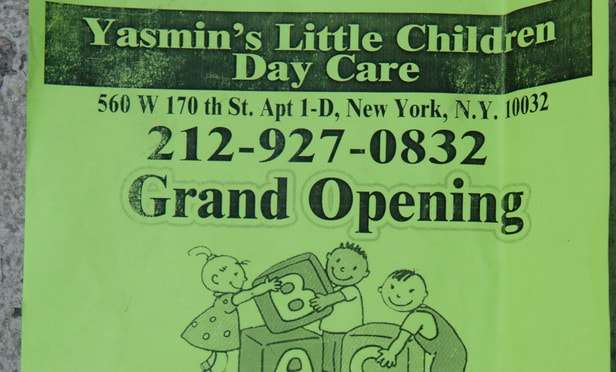The Volokh Conspiracy
Mostly law professors | Sometimes contrarian | Often libertarian | Always independent
$11,175 fine -- for illegally posting 149 flyers advertising babysitting services -- violates Excessive Fines Clause

A New York trial court in Pujols v. City of New York, filed last week but just reported today in the New York Law Journal, held that $11,175 fine for illegally posting 149 flyers advertising babysitting purposes ($75/flyer), posted by a poor working woman, violates the Excessive Fines Clause of the Eighth Amendment:
Petitioner is a 45 year old native Spanish-speaking person who does not write, read or speak the English language. She resides in the Washington Heights neighborhood of New York City in a single bedroom apartment, with a monthly rent of $1,060.85. Petitioner is the principal provider for her household supporting her 76 year-old mother and 57 year-old sister, both of whom share the single-bedroom apartment with her. Petitioner's earnings are derived entirely through her private babysitting jobs. Petitioner's total annual income in 2011 was $9,013.00, out of which she paid self-employment taxes totaling $1,107.00. She qualified for an earned income credit against taxes in the amount of $404.00. Petitioner's sister contributes to the family income by earning approximately $300.00-400.00 per month by way of privately cleaning apartments. The family also receives food stamps.
Petitioner advertised her babysitting services in July, August, and possibly September of 2011. Petitioner posted more than 200 handbills advertising her services on various lampposts, traffic stanchions, and other public structures in the Washington Heights neighborhood. The handbills were 8 1/2 by 11 inches with the words "Yasmin's Little Children Day Care" with her address and phone number. She posted a portion of the handbills about once a week over a period of approximately six to eight weeks. According to petitioner at that time, she was unaware that posting handbills constituted a potential violation of Administrative Code § 10-119. Moreover, petitioner contends that after learning in late August or early September of 2011 that posting handbills maybe unlawful, she ceased to do so. On July 29, 2011, August 1, 2011, and August 17, 2011, … Department of Sanitation (DOS) Enforcement Agents[] removed 149 of petitioner's handbills from City property….
Subsequent to the hearing, [Administrative Law Judge Mitchell] Regenbogen issued a decision on December 6, 2011, in which he sustained all the 149 NOVs, assessed a $75.00 fine for each violation, culminating in a total fine of $11,175.00….
A fine is unconstitutionally excessive if it "notably exceeds in amount that which is reasonable, usual, proper or just" (People v Saffore, 18 NY2d 101, 104 [1966]). Thus, the Excessive Fines Clause is violated where the fine is "grossly disproportional to the gravity of [the) offense" (United States v Bajakajlan, 524 US 321, 334 [1998]; see Canavan, 1 NY3d at 140). "In determining gross disproportionality, courts consider a multitude of factors, many of which concern the particular circumstances of the wrongdoer" (Matter of Street Vendor Project, 43 AD3d at 346)….
It is undisputed that petitioner violated the relevant Administrative Code provision and substantial evidence supports ECB's determination that petitioner is liable for violating § 10-119 of the New York City Administrative Code, which generally prohibits the posting or other placement of handbills, posters, notices, signs and other written materials on certain public property. Nonetheless, this Court finds that under the specific circumstances presented herein, the imposition of the mandatory minimum of $75.00 per violation for a total penalty of $11,175.00 amounts to an unconstitutionally excessive fine, and cannot be viewed as solely remedial (see Matter of Prince v City of New York, 108 AD3d 114, 118-119 [1st Dept 2013]; see also Matter of Ruiz v City of New York, 42 Misc 3d 1233[A] [Sup Ct, NY County 2014]).
Moreover, this Court, in considering the seriousness of the offense, the severity of the harm caused to petitioner, and the City's objective to deter posting of materials on public property, we find that the fine imposed is "grossly disproportional" to the gravity of petitioner's offense (see Prince, 108 AD3d at 120, quoting BaJakajian, 524 US at 334; see also Canavan, 1 NY3d at 140).
Thanks to Keith Kaplan for the pointer.
Show Comments (0)